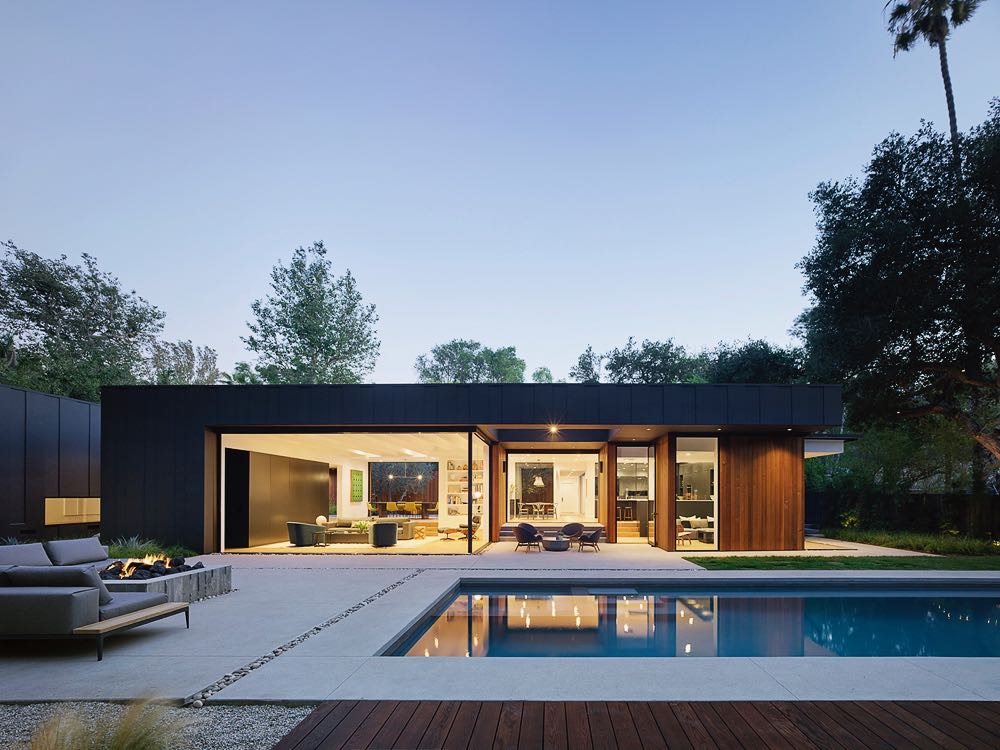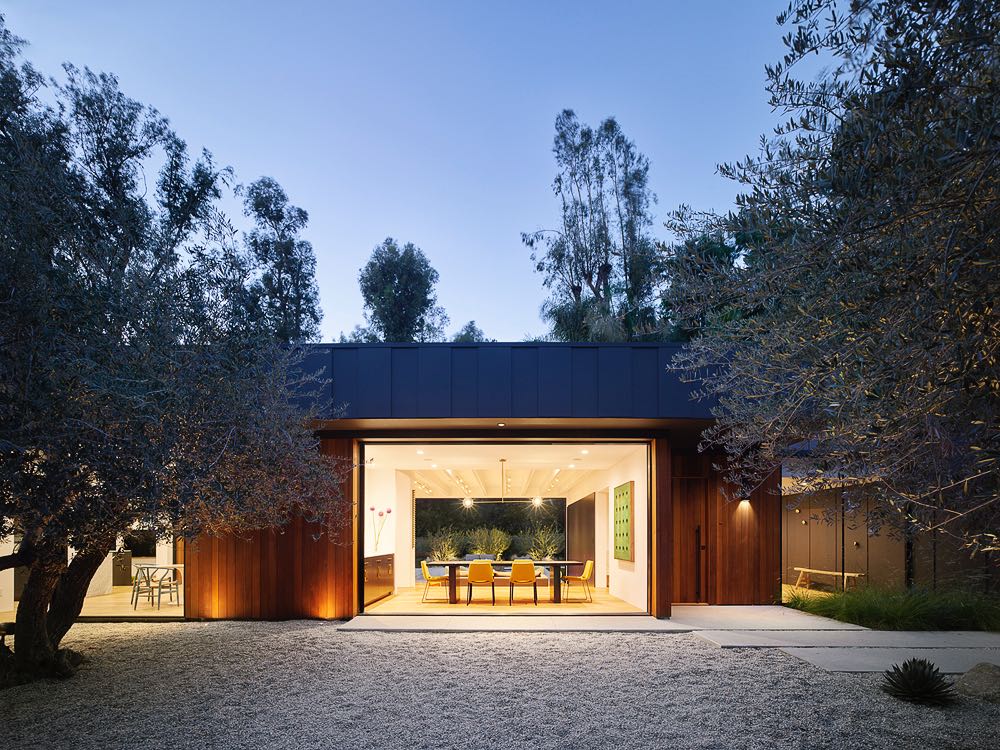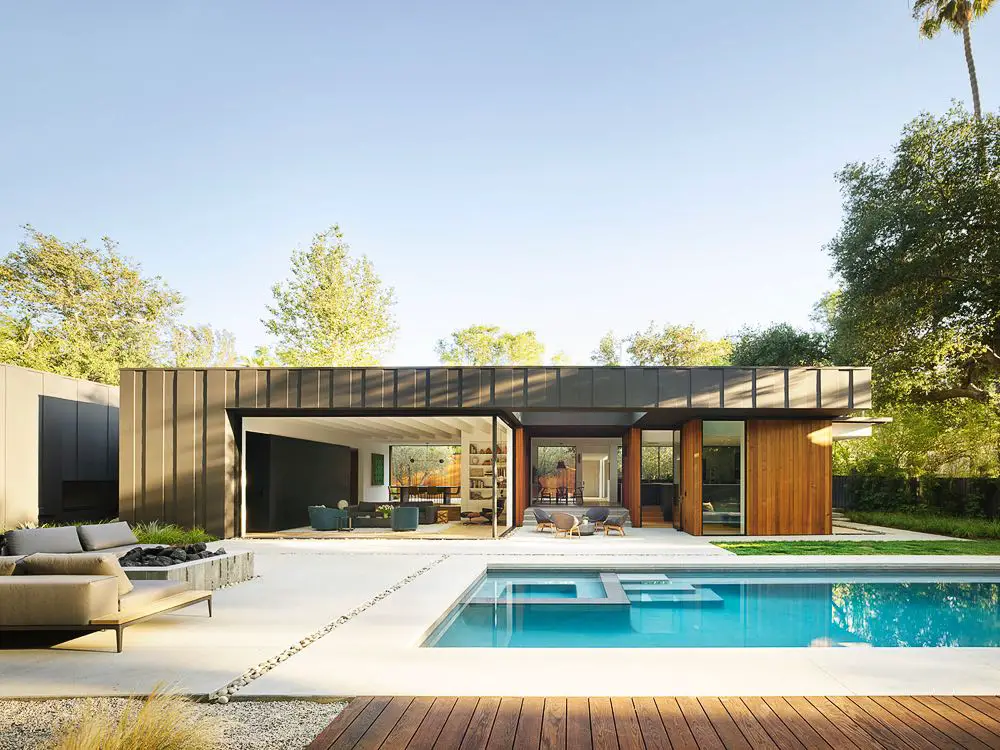
Modern architecture often finds inspiration in midcentury period design, from creating fluidity to absorbing elements to highlight the surrounding landscape. David Thompson, founder of Los Angeles-based architecture firm Assembledge+, recently completed a house for himself and his family in the Hollywood Hills region.
The Laurel Hills Residence makes use of simple sustainable systems to reawaken the natural environment, while at the same time naturally extending from inside to outdoor living spaces, taking full advantage of the surrounding landscape.
Which part/s of a new project excite(s) you the most?
My two favorite parts of a new project are the beginning and the end. During the initial phases I love connecting with the client and discovering a shared excitement about the design potential, which brings me to the next step; taking that excitement into the initial design process where those first ideas begin to take on a spatial and architectural form.
After moving through the extraordinary process of all the complexities of realizing a project, there is a moment when the architecture is finally touched by the real sunlight and occupied by people, at which point it truly comes alive.
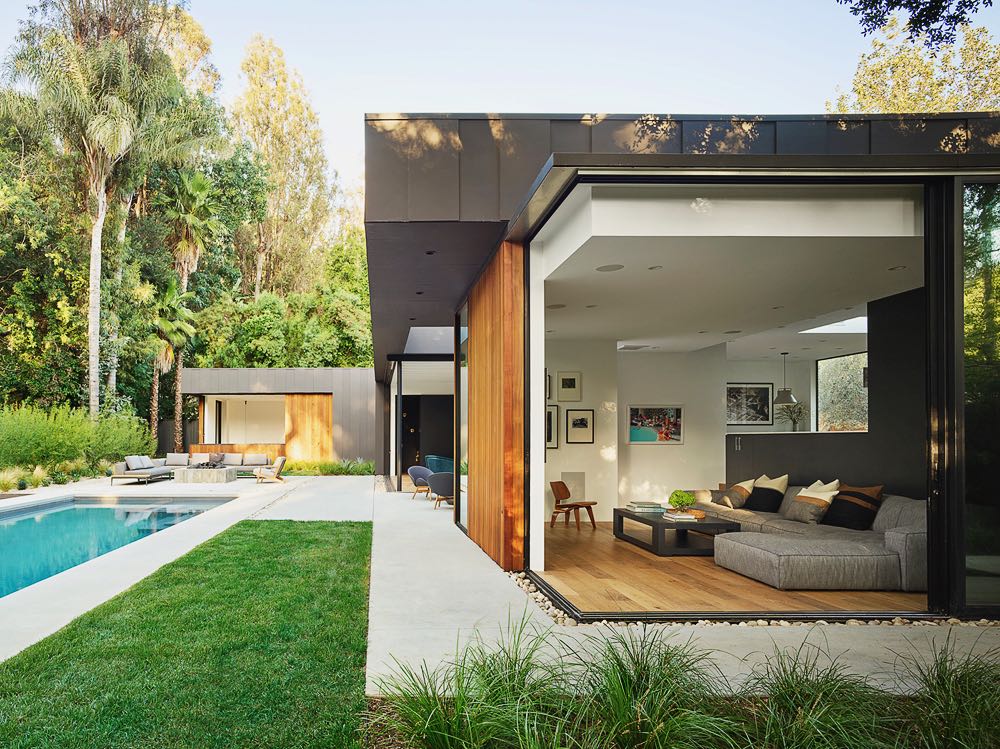
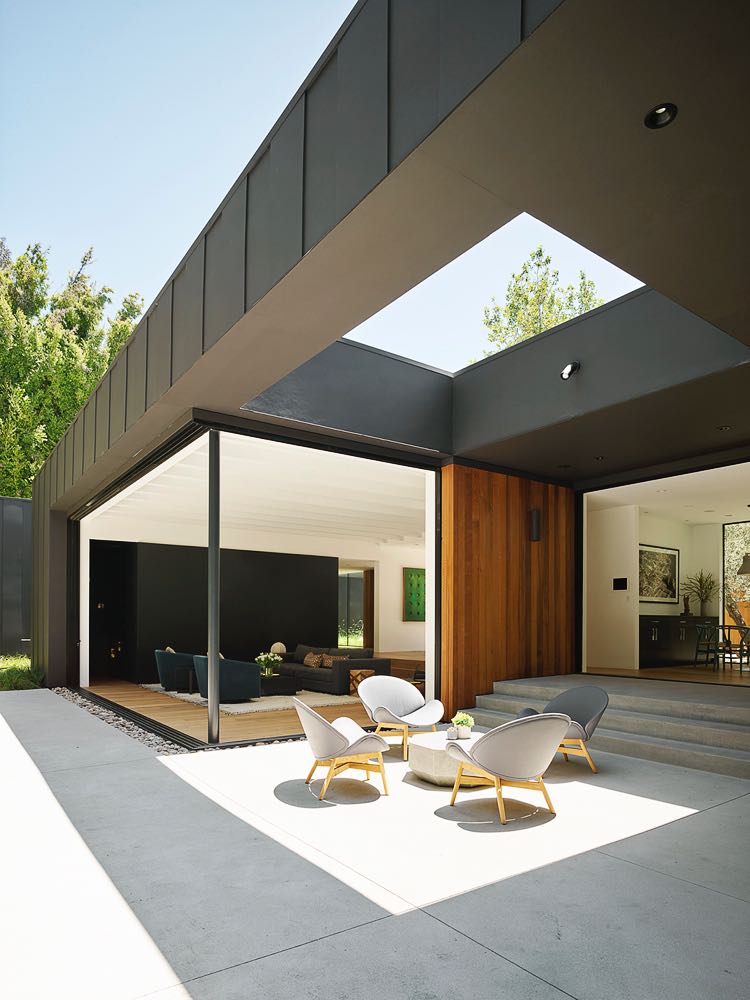
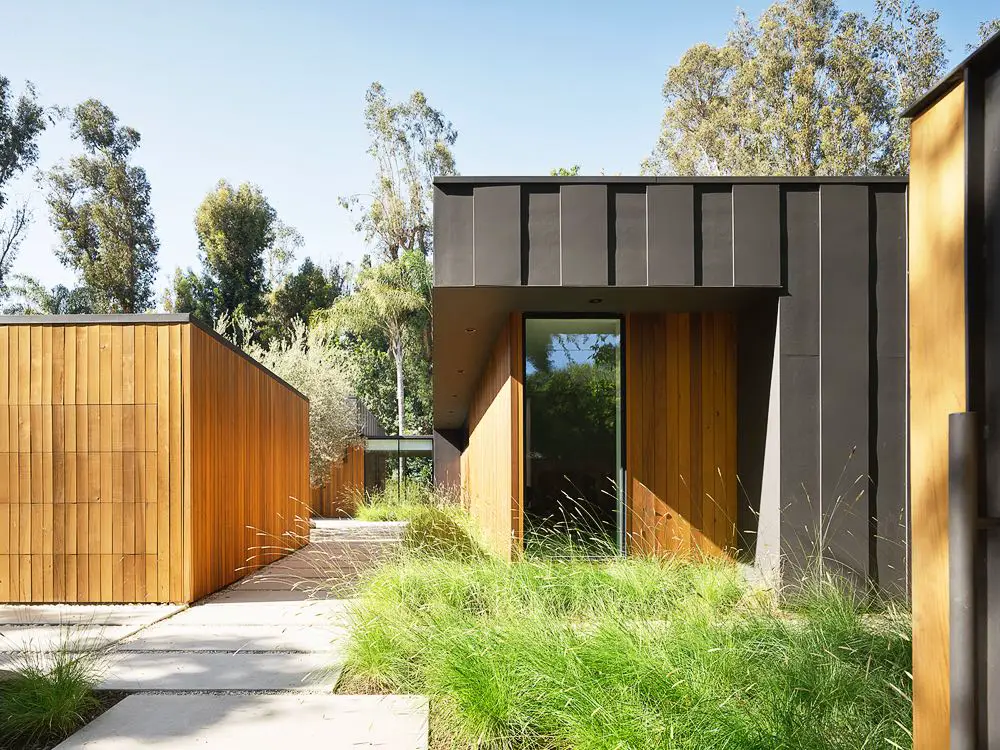
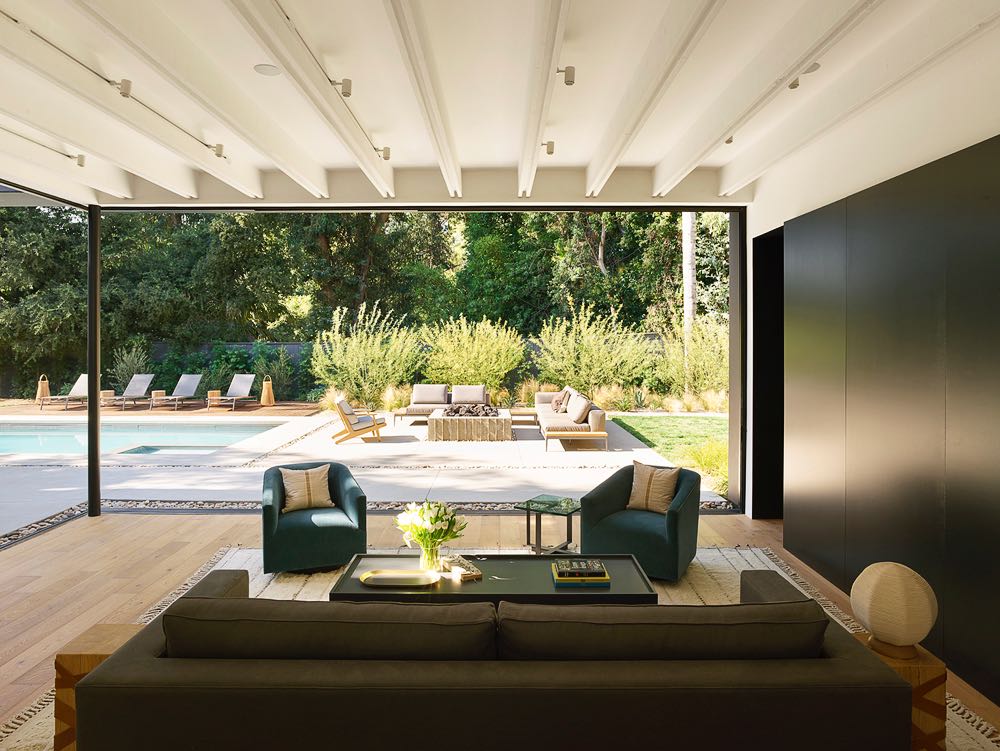
What are the emerging trends in residential architecture that will shape our way of living in the next ten years?
I think an emerging trend that is going to have a lasting impact on residential architecture is the practice of wellness in architecture and design. The idea that buildings can be designed with socially conscious systems and materials to promote the harmonious balance between physical, emotional, cognitive and spiritual wellbeing while regenerating the natural environment.
At Laurel Hills the spatial connection with nature elevates the inhabitants’ spiritual wellbeing, while simple uses of solar panels, rain barrels and tankless water heaters help the architecture to regenerate the natural environment.
Can you tell us a bit about the story of this house/project and its owners?
The Laurel Hills Residence is a house designed and built by myself and my team for my family. With deep roots in Los Angeles, California, we sought a design with modernist sensibility, expressive of the evolving traditions of Southern California modernism and contemporary architecture.
As a “client” we wanted living spaces that would connect us with the natural surroundings and could be completely opened up to take full advantage of the Southern California climate. Having designed and built two previous homes, we embarked on the journey being fully aware of the course that was necessary in order to properly inform the design process.
When the property was acquired, the intention was to live on the site in the existing structure during the design process in order to establish a true sense of the place.
During the two years prior to tearing down the existing structure and the commencement of construction, we were able to experience the site throughout the year learning about sun patterns and environmental conditions that affect the site, along with how the property and the house could best be shaped to meet their needs and conform to the lifestyle desired.
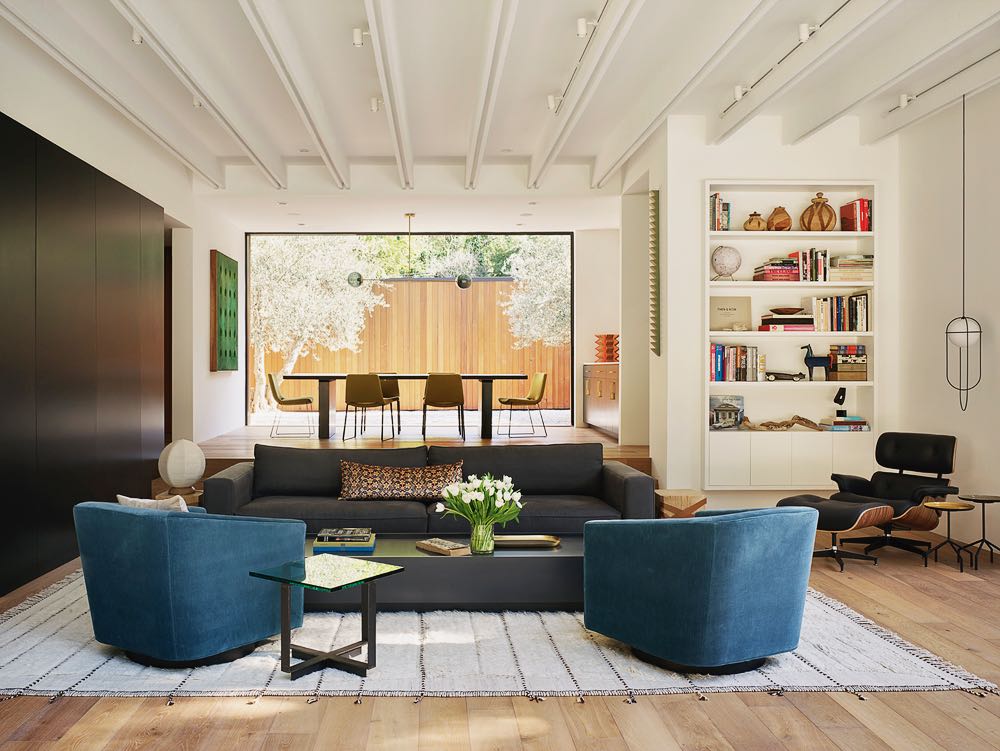
Another element of the site being in the foothills is the vanished presence of an old creek that, at one point, ran through the property. After the purchase it was discovered that this creek had been vacated by a previous owner back in the 1960’s.
The design makes a metaphorical reference to this geological history with a glass hallway connecting the guest pavilion to the living area. This bridge-like element follows the approximate path of the original stream, spanning over the gravel courtyard with the olive trees, symbolizing the dry riverbed and thereby referencing and paying respect to the property’s past.
What did your clients ask for in their brief?
One of the key ambitions was the unspoken desire for the architecture to provide a framework for all users to experience programmatic elements of the design in an artful and elevated manner. My wife is a real estate broker, and she wanted a few things that she sees missing in other houses on the market. We have two daughters that are very different, and we knew that a fully shared bathroom would not work. The design solution was our version of the jack-and-jill bathroom that shares the sky lit shower yet provides each girl with their own counter and toilet.
What was your approach for the project?
The approach to the project was the same approach that we employ for all our residential projects; and that is that we always look beyond the confines of the house itself. Instead, we look to the perimeter of the site to pull the living experience to the bounds of the property to experience and take advantage of the Southern California climate.
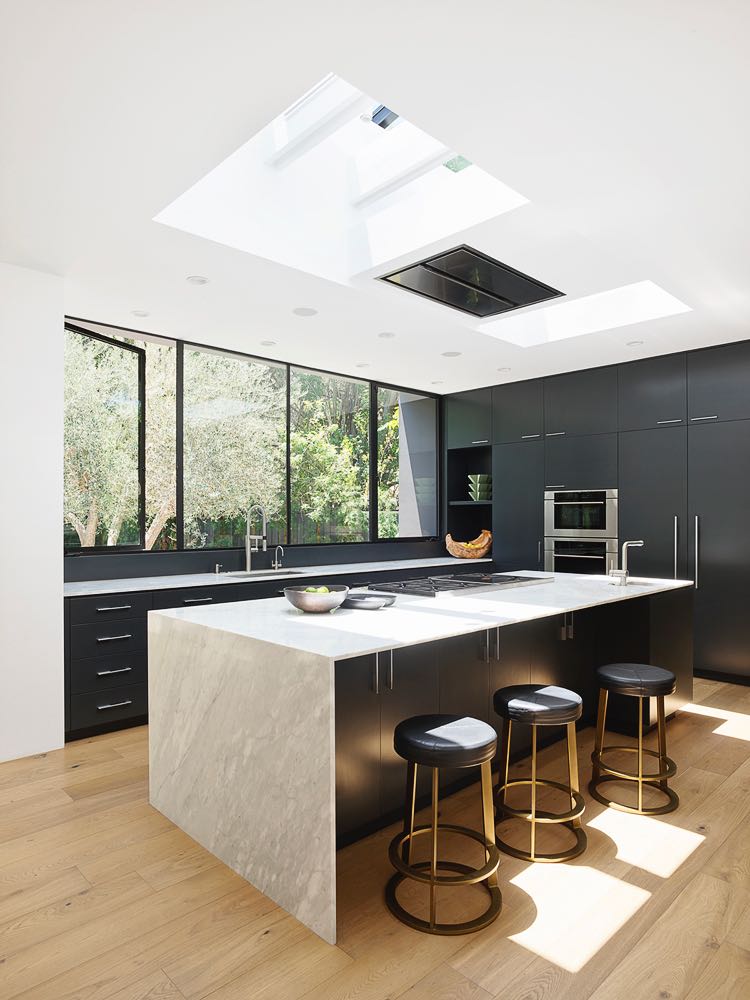
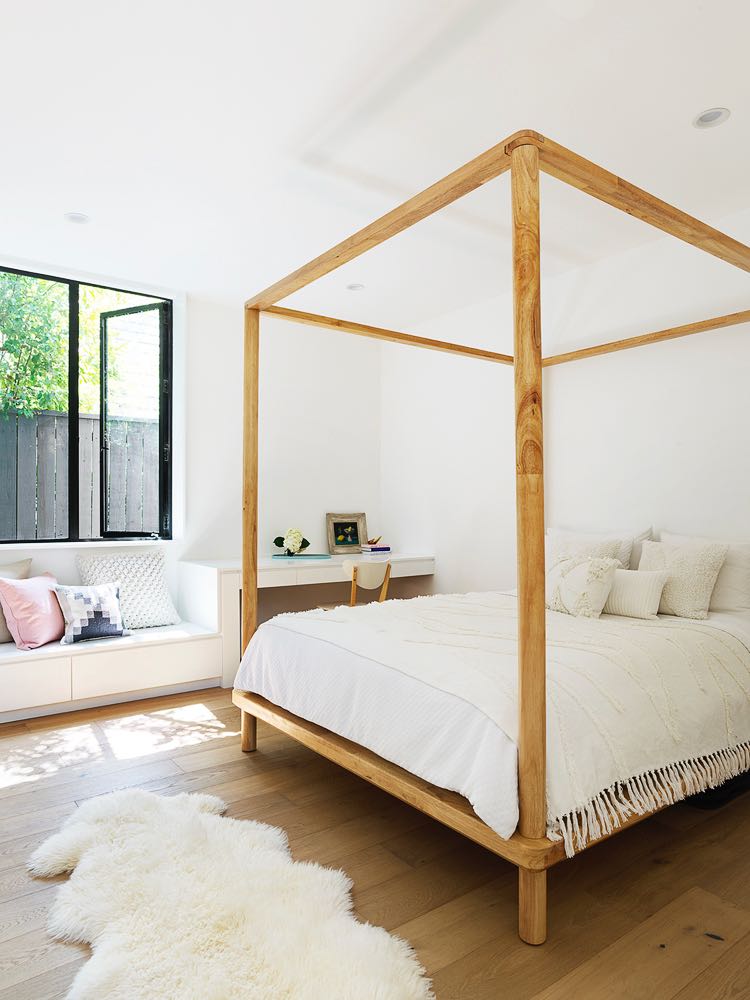
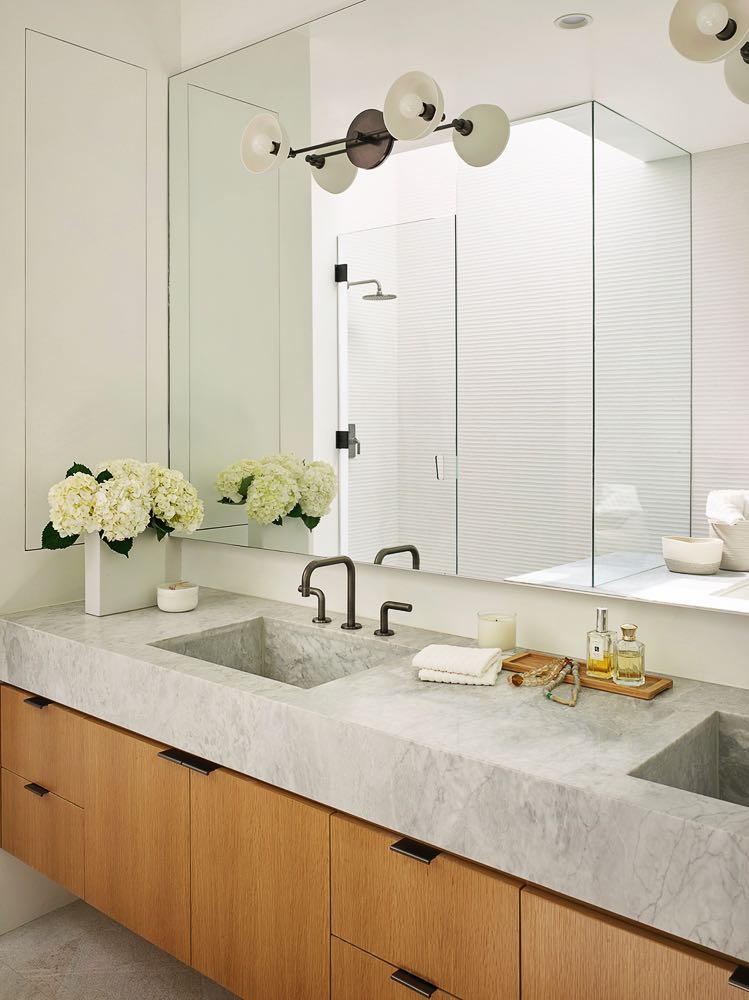
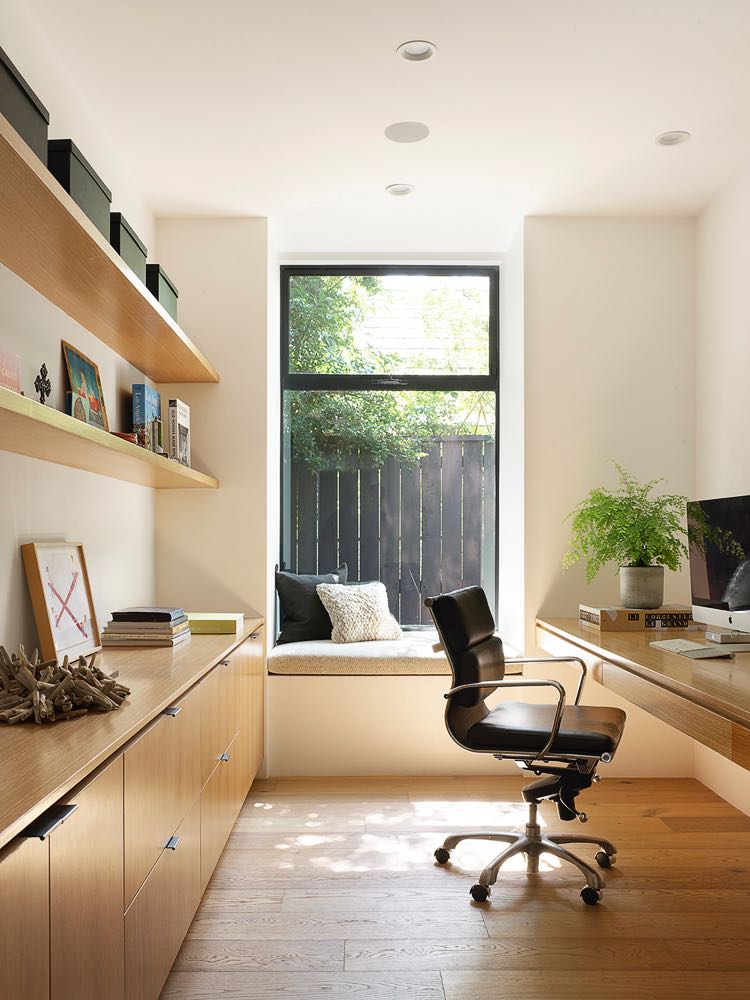
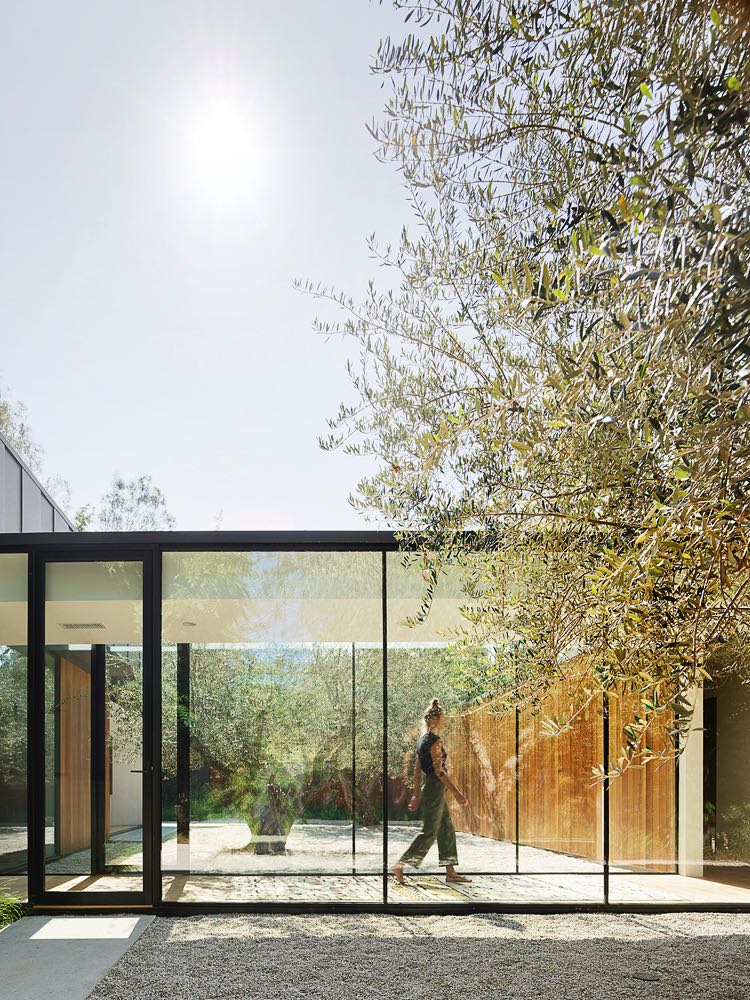
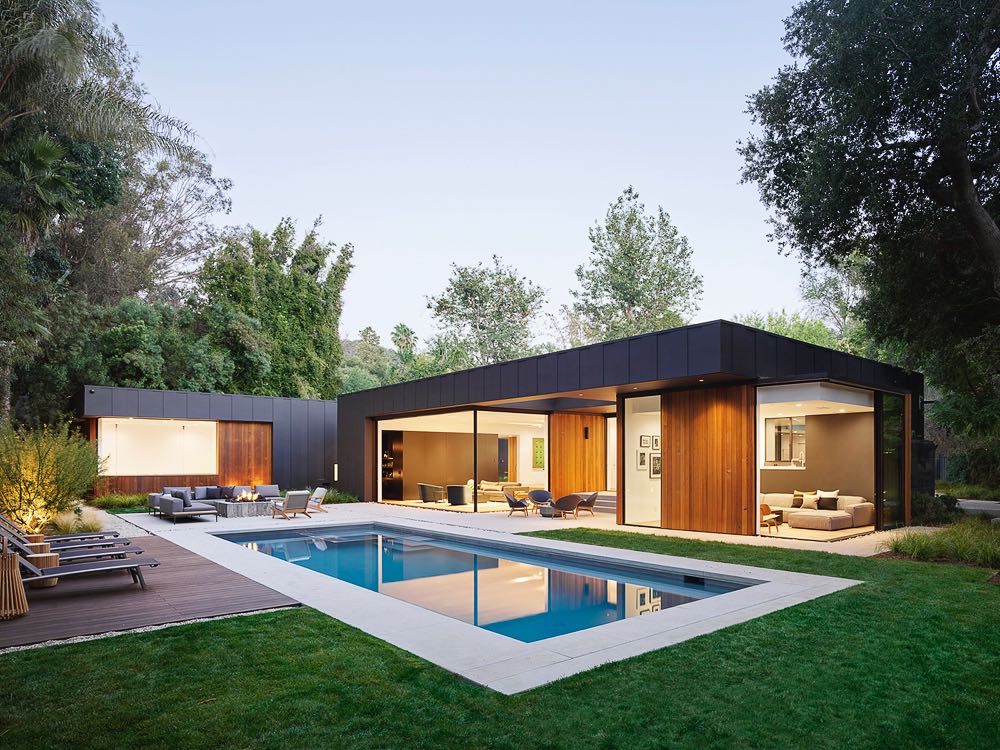
Which is your favourite/most important feature of this house and why?
Unlike many iconic Los Angeles homes that orient themselves around panoramic city views, the Laurel Hills Residence sits in the foothills of the famed Laurel Canyon, where the property offers a secluded and inwardly focused experience. My favorite part of the house is the constant connection with the natural surroundings and being able to fully engage my living experience with the landscape.
We are so fortunate to live in a climate that affords the opportunity to live outdoors all year around and in a way treat the entire site here as we are accustomed to treating interiors. For instance, the bedroom wing is separated from the courtyard by a walkway and tall grasses that pass through a corner of the courtyard, thereby signaling a continuing, unfolding space.
What materials have you used and why?
The key materials used are Western Red Cedar, darkly painted cement board and glass. They are simple and unaffected, blending seamlessly with the property’s natural surroundings and context of the neighborhood.
What was the first question you asked yourself when you got the assignment?
Can we do it? [laughs] As soon as the property was accessed the key task was to determine how the existing structures and siting would inform the direction in the design process.
How important was the contribution of your clients, if there was any?
Since we (my family) were the client, our contribution was essential. And I look at all our clients that way, we will always need patrons of good architecture to continue to believe that engaging with an architect is the only way to create a better built environment. In our other project – the Wonderland Residence – the client told us what they needed programmatically, but then told us they wanted something special and wanted to allow us the freedom of creativity to produce a solution that elevated their living experience. The result was a second floor addition that turned the house into a ‘treehouse.’
Have you found any inspiration in the midcentury period while designing the house?
We often refer to the works of Schindler, Neutra and Lautner, to name a few, for inspiration about a movement that was about a lifestyle choice for its time. Many of their works seek to create a blurred line between indoor and outdoor and we attempt to continue to push these ideas in a modern framework.
